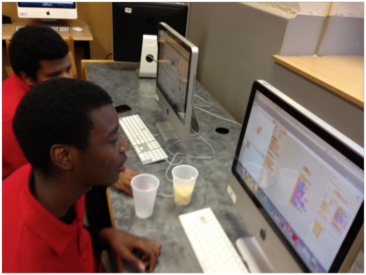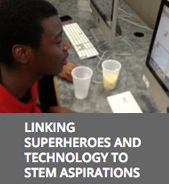Based on a submission by June Ahn about his NSF-funded project to develop STEM identities.

If you could be a super hero, who would you be? How would you get your powers? What sorts of gadgets would you possess, and how would they work? Youth who are asked to imagine alternative worlds and futures, and express these ideas through storytelling, have rich opportunities to connect science, technology, engineering, and math (STEM) to their personal interests and future goals.
NSF Project Information
Title: Developing STEM Identities through Participation in Science-Infused Media and Virtual Peer Networks
Award Details
PIs: June Ahn, Mega Subramaniam, Allison Druin, Kenneth Fleischmann
This project demonstrates how making these connections during early adolescence helps to spark aspirations to pursue STEM-related interests and academic pursuits. Laying this foundation is important for adolescents as they begin to a) Recognize the relevance of STEM in their everyday life; (b) Understand how personal interests relate to formal academic endeavors, such as the importance of computing, art and design in becoming a game designer; and (c) Formulate growing aspirations and plans to pursue these interests in future academic and career pathways.

The “Sci-Dentity” project is a weekly afterschool program that served 61 urban, middle school students and was implemented in school libraries. Our youth participants engaged in science storytelling, discussed the science behind popular science fiction stories, created superheroes, designed video games, programmed “monsters” in Scratch, and helped a production company design a sci-fi transmedia game. Our research team followed a cohort of middle school learners, longitudinally from 6th-8th grade, to track how youth developed interests, literacy skills, and aspirations toward STEM over this time period.
Learn more at the Sci-Dentity project web site.
Image Credit: Research Team, University of Maryland, College Park

